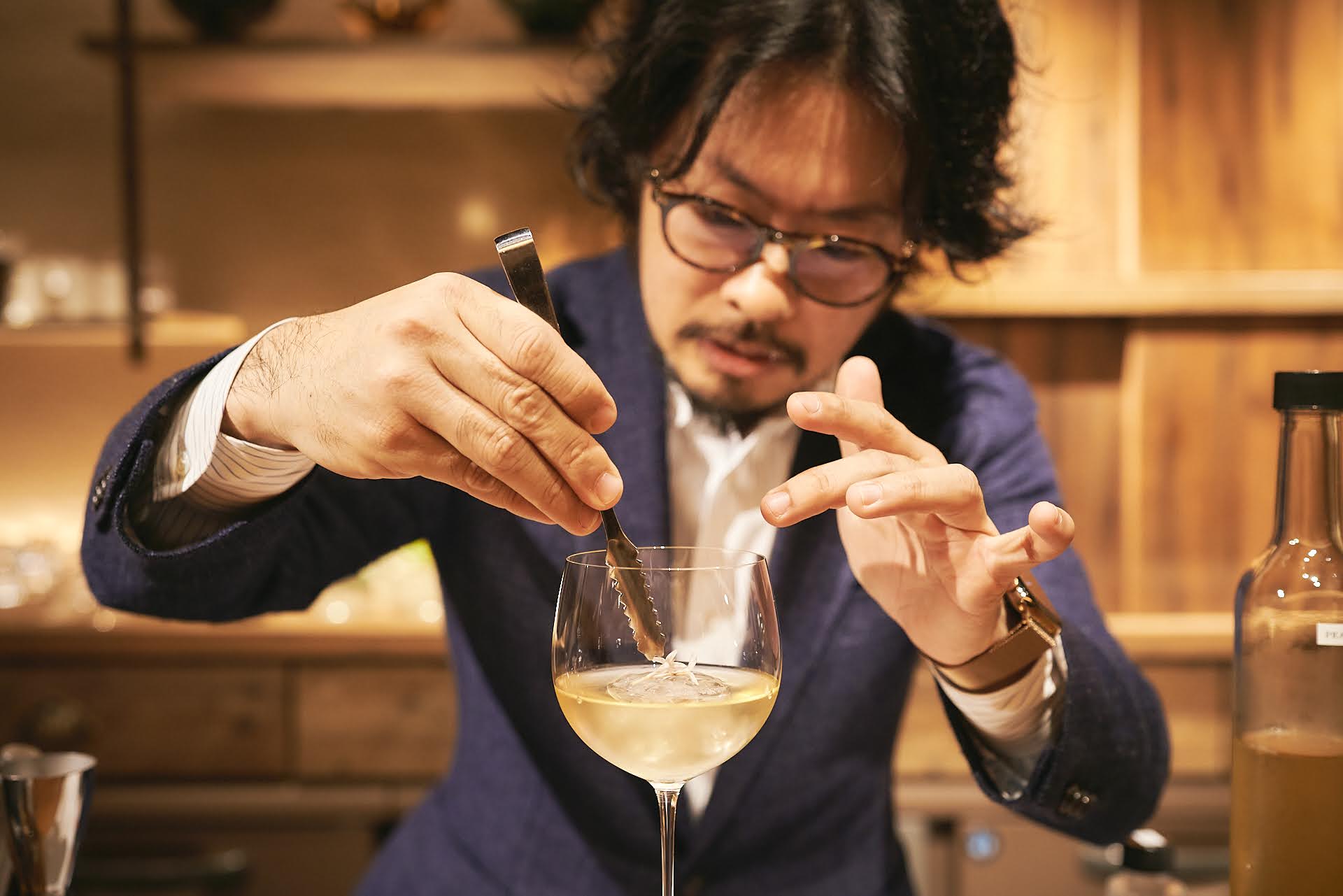Shuzo Nagumo is the first person to introduce centrifugal separators and vacuum distillation equipment to bars in Japan, and his innovative methods have paved the way for professional mixologists.
He runs a number of high-profile bars including The Bar code name Mixology Akasaka, Mixology Salon in Ginza SIX, and memento mori in Toranomon Hills Business Tower. He leads on the frontline of mixology and is always challenging himself to new creations.
A mixology (*) cocktail is made by combining fresh fruits, vegetables, herbs, and spices with spirits. They are also made without using flavored liqueurs or syrups that are conventionally used in cocktails.
The experience of going to a bar is a kind of shikohin experience. We spoke with Nagumo about why he continues to explore and pursue the art of mixology.
(*) Mixology is a world coined by combining the words “mix” and “olgoy” (a science or study)
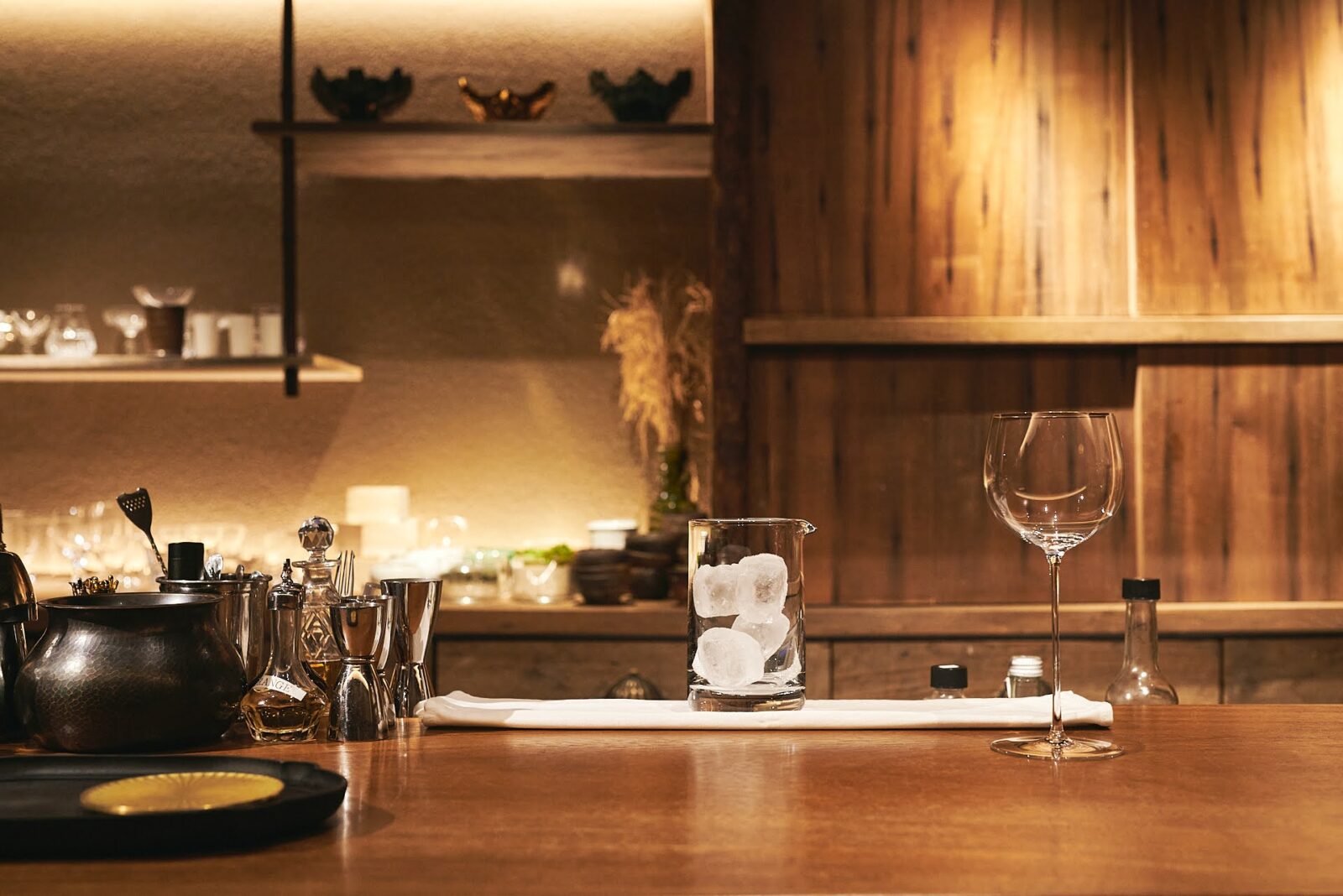
Forging new mixology methods through knowledge and skill
“I never thought I would find something I disliked to be so delicious. It was like magic.”
Shuzo Nagumo looks back to the beginning of his career as a mixologist with these words.
“I was working part-time at a bar in Okayama before I moved to Tokyo. One of my seniors asked me which alcohol I did not like, so I told him that it was shochu. He made me a cocktail with shochu in it and it was incredibly delicious.”
“At the time, I thought it was like magic for him to turn something I did not like into something so delicious. I wanted to learn more about mixing drinks, so I moved to Tokyo in 2000 and started pursuing a career in bartending.”
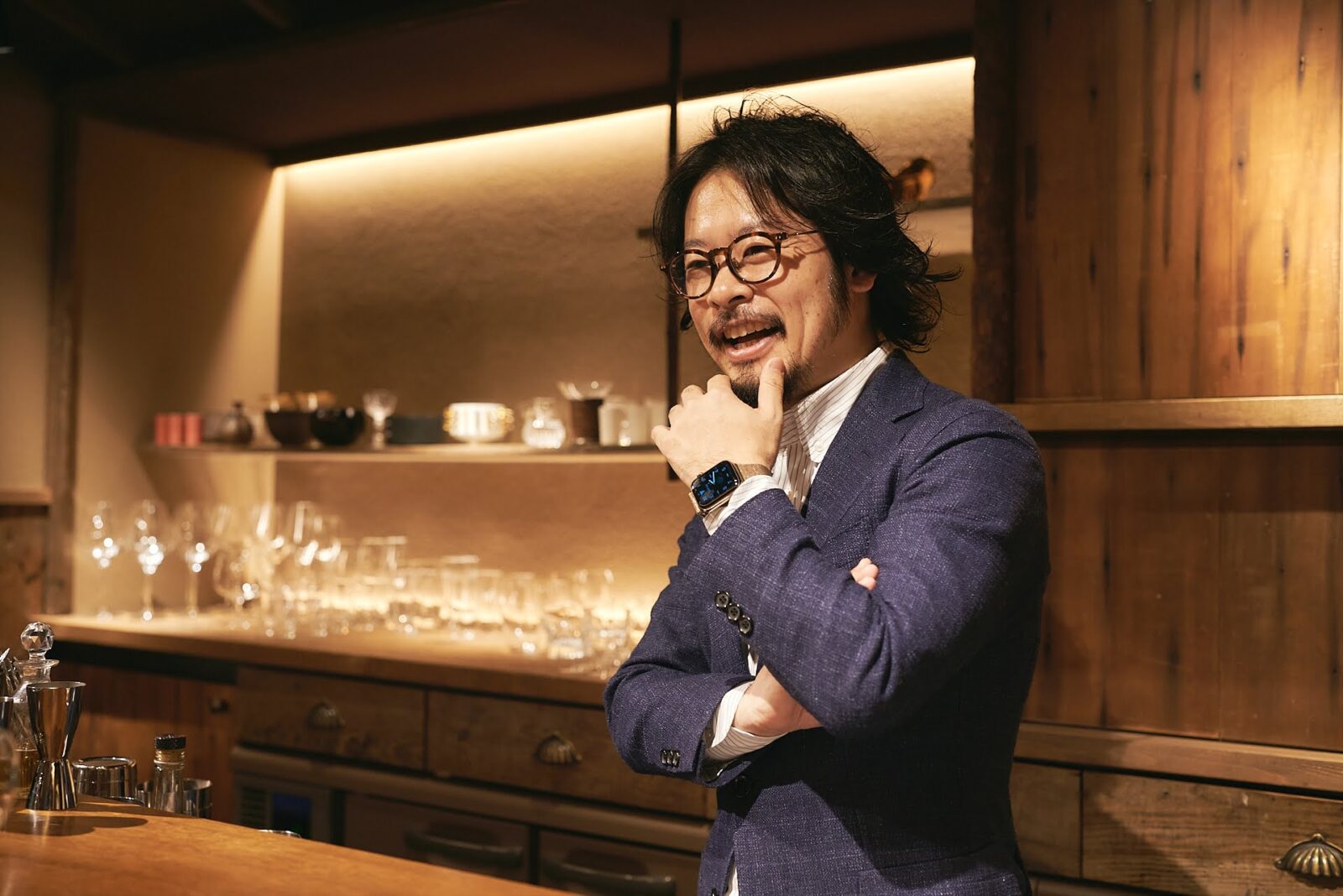
After graduating from university, Nagumo started working in the restaurant and real estate industry because he believed it was the quickest way to start his own business.
In 2006, he traveled to England and worked at Nobu London for a year. At the age of 27, he returned to Japan to help with the opening of the Italian restaurant XEX TOKYO in Yaesu. He worked as the head bartender there until February 2009 when he opened his own mixology bar.
Nagumo had been exploring mixology cocktails from his time in XEX TOKYO, and says that the essence of mixology is to constantly pursue the art of mixing.

“When I want to make a tea cocktail, I start by picturing the flavor I want to pursue in my mind. Then I think about which gyokuro green tea to use, or how to incorporate oolong tea, and so on. However, I often don’t reach the flavor that I am aiming for when I mix existing teas.”
“In order to create something that did not exist before, you need a brand new approach. In order to create a new approache, you need to acquire technique.”
“To master the art of mixing, one must constantly acquire new knowledge and skills that will act as your asset. I believe that a mixologist should be able to turn any kind of flavor into a cocktail.”
Exploring the world of mocktails
Nagumo’s extensive approach to mixing and his flexible ideas distinguish him from bartenders who create classical cocktails by the book.
His approach has led him to explore the world of non-alcoholic cocktails, which later became known as “mocktails.”
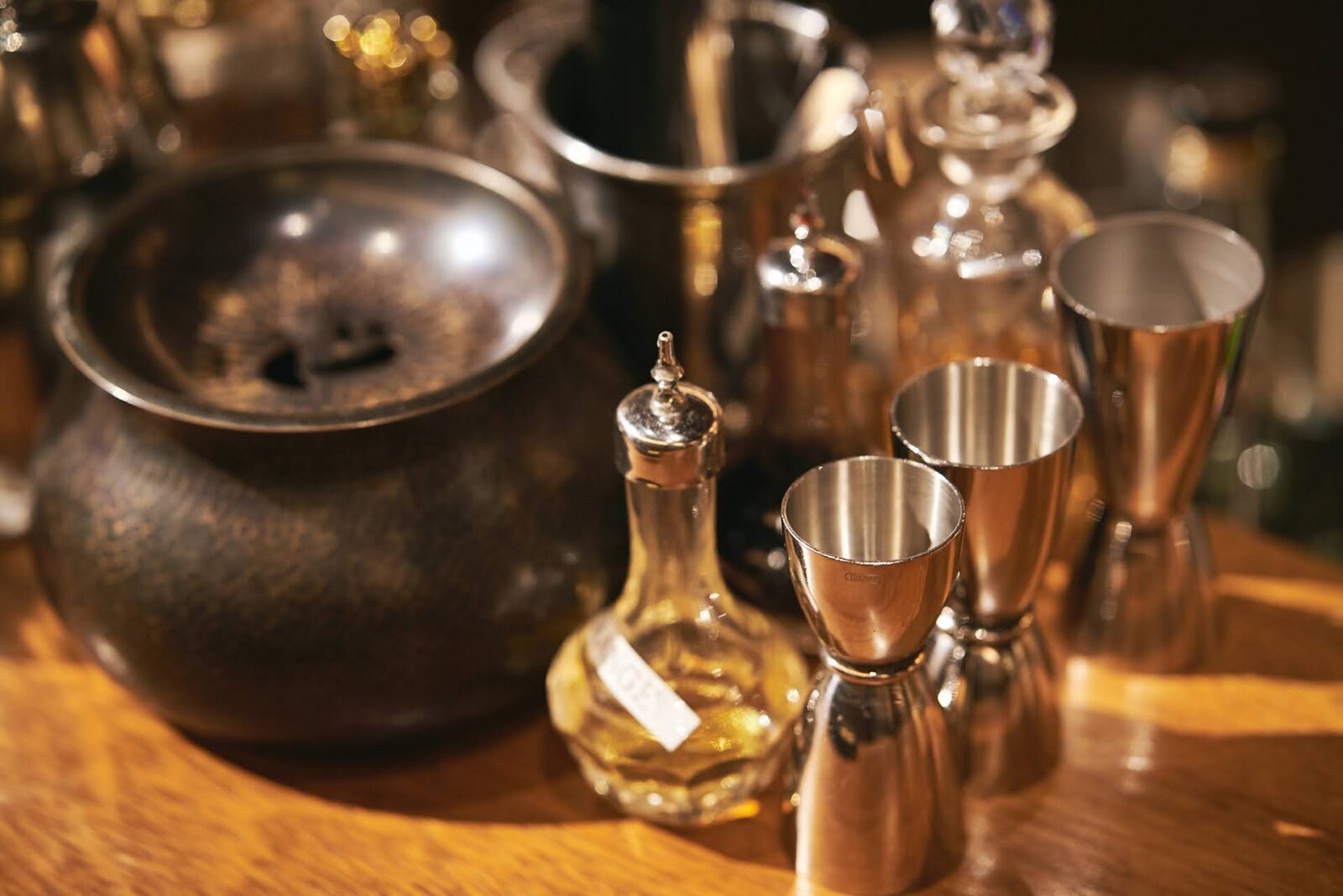
“I was not at all against exploring the world of non-alcoholic drinks because I believe that all beverages are important and I look at all of them as a whole. In recent years, the domestic consumption of alcohol and the population of people who drink alcohol has been on a slow yet constant decline in Japan. Even people among the older generation who are accustomed to drinking are more likely to restrain from drinking on some days.”
“There is also a growing number of older people who are becoming more particular about what alcohol they choose to drink. The idea is that if one is going to indulge in a drink, it might as well be a good one. When we do catering or work at an event, we ask about the expected clientele so we can suggest drinks accordingly. For example, if there is going to be a larger group of middle-aged to elderly people, I will add mocktails to the lineup and they prove to be very popular.”

Nagumo runs the FOLKLORE bar in Chiyoda-ku Tokyo, where we held the interview, and he says that less than 10% of customers at this bar order non-alcoholic drinks. However, he says that mocktails require a high level of skill.
“It is more difficult to create a depth in flavor in mocktails because you cannot add the bitterness and unique flavors that come from alcohol. If you use a ready-made drink as a base for making cocktails, most of the acidity comes from fruit juice so you can easily imagine what the final flavor will be like. The challenge is making a drink that goes above and beyond one’s imagination, and that is what makes devising creative drinks so worthwhile.”

The drink pictured above, garnished with an edible flower, is the White Peach Oolong and Chardonnay Mocktail. The drink’s base is a Taiwanese white peach oolong tea, mixed with white grape juice and a homemade milk punch.
The homemade milk punch is made with with cloves, cinnamon, pineapple and orange slices soaked in coconut water and milk to bring out the aroma of the spices and fruit. Finally, the citric acid is added to separate the liquid from the casein (condensed protein) and it is filtered.
Although it is a clear liquid, it has the reminisce of a yogurt-like flavor.
The more one thinks about the layers of flavors and ingredients, the more concentrated the senses in the mouth become and it allows you to follow the various contours of the drink. There is a depth in the clear, yet refreshing and sweet flavor, and it is a truly fulfilling experience. The aroma of white peaches and grapes tickles your sense of smell with its sweetness, and it brings a feeling of dignified ease.

Flavors that are universally loved
Nagumo shares that flavored Taiwanese teas such as the white peach oolong are “easy to use because they bring out flavors beautifully.”
What Taiwanese teas are used for cocktails and what characteristics make them so suitable for mixing?
“There are the fruity High Mountain Teas and the Tieguanyin Tea, which has a slight tannin that comes from deep roasting, that give cocktails a fuller flavor. There are also sweet candy-like flavors from the honey scented Oolong, which is fermented by having white backed plant-hoppers chew on the leaves, and the Dongfang Meiren that are great to use as cocktail bases.”

On the other hand, Nagumo says that there is a standard for evaluating tea that is particular to Japan.
“The standards for evaluating the flavor of tea in Japan are quite unique, and tea farmers do not favor teas that are too sweet. The teas that win awards at tea competitions are those that have a lingering aftertaste followed by a sharp finish. This sharpness is often given a lot of value, and this preference for lingering aftertaste followed by sharpness is uniquely Japanese.”
It is said that this preference is rooted in the Japanese tradition of finishing off a meal with tea. The sharpness of the tea comes from catechins and tannin, and this was said to “cut off the oil” that was left in your mouth and refresh the palate.
Like tea, beer and sake that have a similar “sharpness” is preferred in Japan.
In many countries around the world, the definition of good flavor is often associated with a prolonged and lingering taste.
Nagumo, having served people from around the world, says his goal is to search for a flavor that is universally loved.
“The longer a flavor lingers, the richer the experience of taste becomes. It is difficult to express a lot in a singular flavor. What I am aiming for is a lingering flavor that changes many times while it lasts. The best example of this would be the taste of a well-aged wine. Wine lovers often call the experience of tasting a wine as a kind of ‘story’ with changing landscapes and transformations.”
Painting a Japanese liquor’s story in its aftertaste
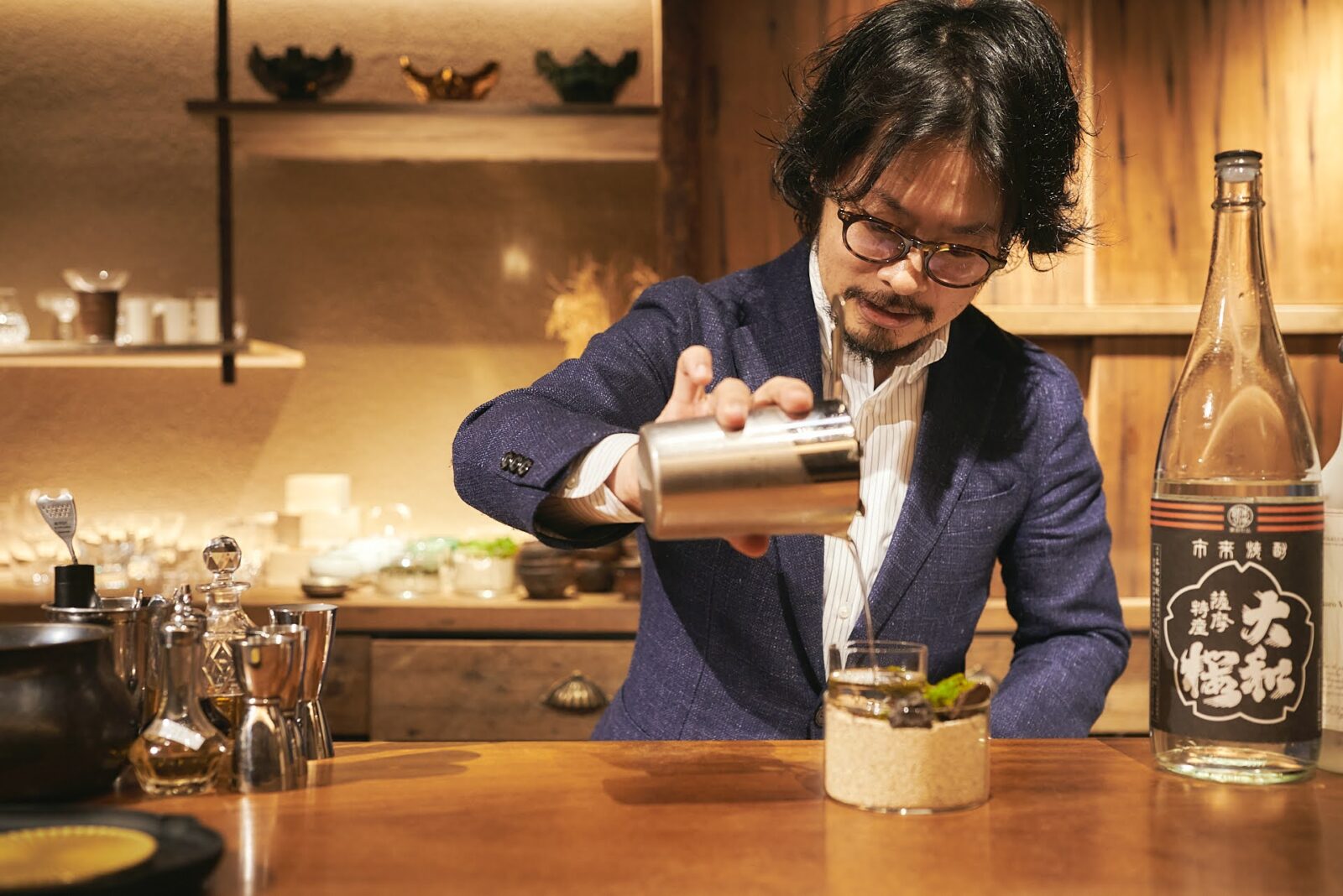
In this day and age, people desire to have not only a momentarily delightful culinary experience, but also a story behind the flavors they experience.
As a mixologist, Nagumo is careful to consider the “terroir,” or the “flavor’s characteristics that come from the climate, soil and other aspects that are unique to the region of production,” when he works with Japanese sake, shochu and other Japanese liquors.
“Japanese sake is made from rice and shochu is made from potatoes, so there is a story behind each sake and shochu that comes from its region of production. The same Yamada Nishiki rice strain will differ in flavor depending on the soil in which it is grown. Even the amount of water that the soil absorbs differs with each region.”
“For example, soil that has a lot of clay is rich in minerals because it contains a lot of microorganisms so sake that is made in these environments have a strong, rich flavor. The same Yamada Nishiki that is grown in more sandy and dry environments has a nice and light flavor.”
“Learning about how sake and shochu is made is the equivalent of learning about each region. Soil is the accumulation of hundreds or thousands of years of cultivating the land, so rice cultivation is a part of the cycle of nature itself. As a bartender, I believe it is our duty to tell the story behind the terroir when serving drinks.”
The next cocktail we tried was called the “Karesansui,” or “Japanese rock garden,” made from a combination of “Yamato Sakura (sweet potato shochu)” made by Tekkan Wakamatsu and vodka soaked in gyokuro green tea.
It was served in a glass on top of a small depiction of a Japanese garden of sand and moss.

The ”Karesansui,” or “Japanese rock garden,” is made with shochu and vodka infused with gyokuro green tea.
The slightly sweet white port wine and Lillet Blanc vermouth, a fortified wine, blend well with the mildness of the shochu, and the shochu seems to exert its presence in the lingering aftertaste.
“The dry flavor of shochu has a leafy and root-like flavor that goes well with teas such as the Chiran Tea of Kagoshima. Potatoes are grown in the fields surrounding the Chiran Tea trees so the tea has a slight potato and radish like aroma so it matches well with sweet potato shochu.”

(From left) Sweet potato shochu Yamato Sakura, vodka infused with gyokuro green tea, GRAHAM’S FINE WHITE port wine and Lillet Blanc vermouth.
The bar counter, where inspiration is born
In order to create his unique drinks, Nagumo keeps more than 30 different kinds of homemade liqueurs and more than 100 different ingredients, including the white peach oolong tea used in the mocktail described earlier, on hand at each bar he runs.
As the director of five different bars, Nagumo says that the bar counter is “a place where inspiration is born.”
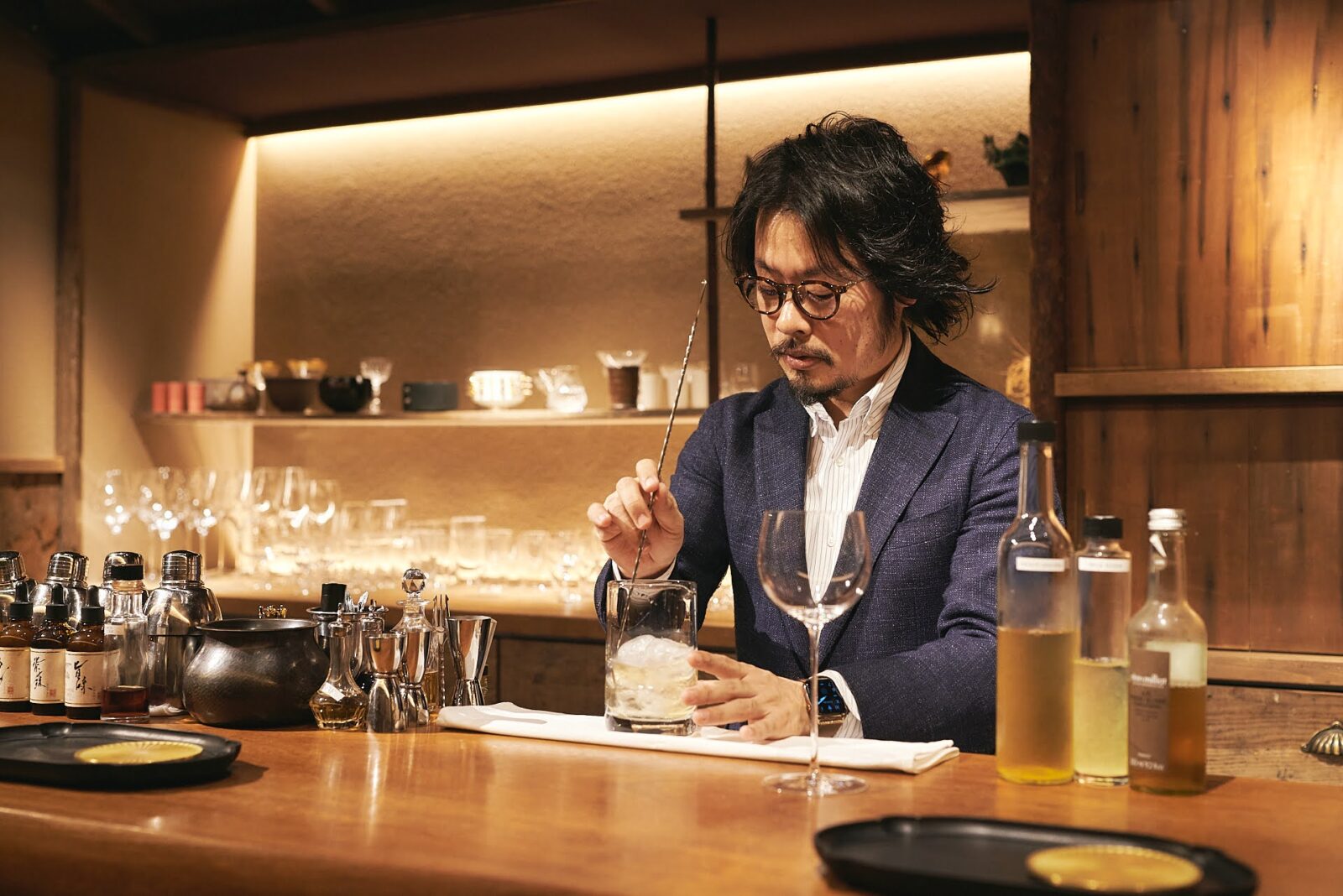
“Inspiration is not something that can be carried into the next day. The bar counter is ideal because you can test a new idea right away. Ideas depend on the freshness of the inspiration and so it makes a big difference to test the idea right away, rather than writing it down and trying it the next day.”
“The atmosphere of the bar counter allows me to really immerse myself into ideas for shochu and sake, and speaking to the customers also inspires new ideas. Many of the customers who visit our mixology bars are very intellectual and curious people, so they tell me about new spices or ingredients. They are a great source of new information.”
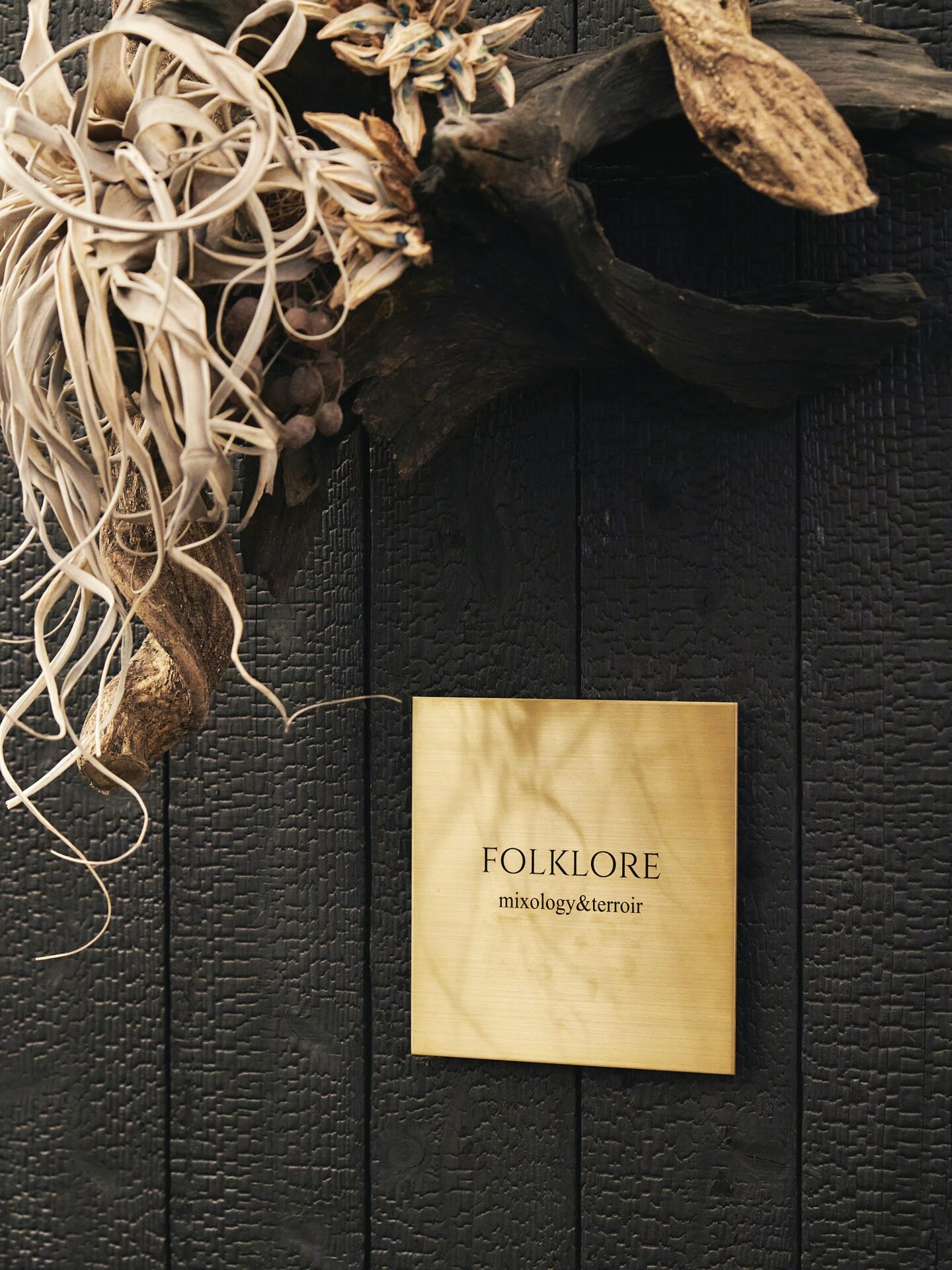
In order to ensure that his creativity stays sharp, Nagumo says he only eats protein in the morning. He tries not to eat until after he finishes work because having an empty stomach helps to sharpen his sense of taste.
On his days off, he tries to keep his schedule as open as possible to give himself time to reflect and leave room in his mind to think.
“In an extreme sense all shikohin, including bars, may be something that the world could do without. However, they are things that enrich our lives and give us a sense of luxury. They also allow us to discover new things, meet new people, refresh our minds and share the joys of life with others. I try to leave space in my life to truly enjoy these indulgences.”
Going to a bar may not be a necessity.
However, going to a bar can lead to new encounters and discoveries.
For mixologist Nagumo, the bar is a place where he can constantly take on new challenges to master the art of mixing drinks. It is also a place for unlimited creativity.
Photo: Umihiko Eto
Translation: Sophia Swanson
Follow us! → Instagram / Twitter
Special thanks: Spirits&Sharing.inc FOLKLORE
After taking a food sensory test during university and discovering a keen sensitivity to “umami”, she traveled for food in and out of Japan for 25 years. While working at a publishing company, she was in charge of the gourmet food section of a fashion magazine. Later, she worked for an informational magazine before becoming independent in 2013. Now she writes articles and has a series on food for online and printed mazagines.
Editor. Born and raised in Kagoshima, the birthplace of Japanese tea. Worked for Impress, Inc. and Huffington Post Japan and has been involved in the launch and management of media after becoming independent. Does editing, writing, and content planning/production.
